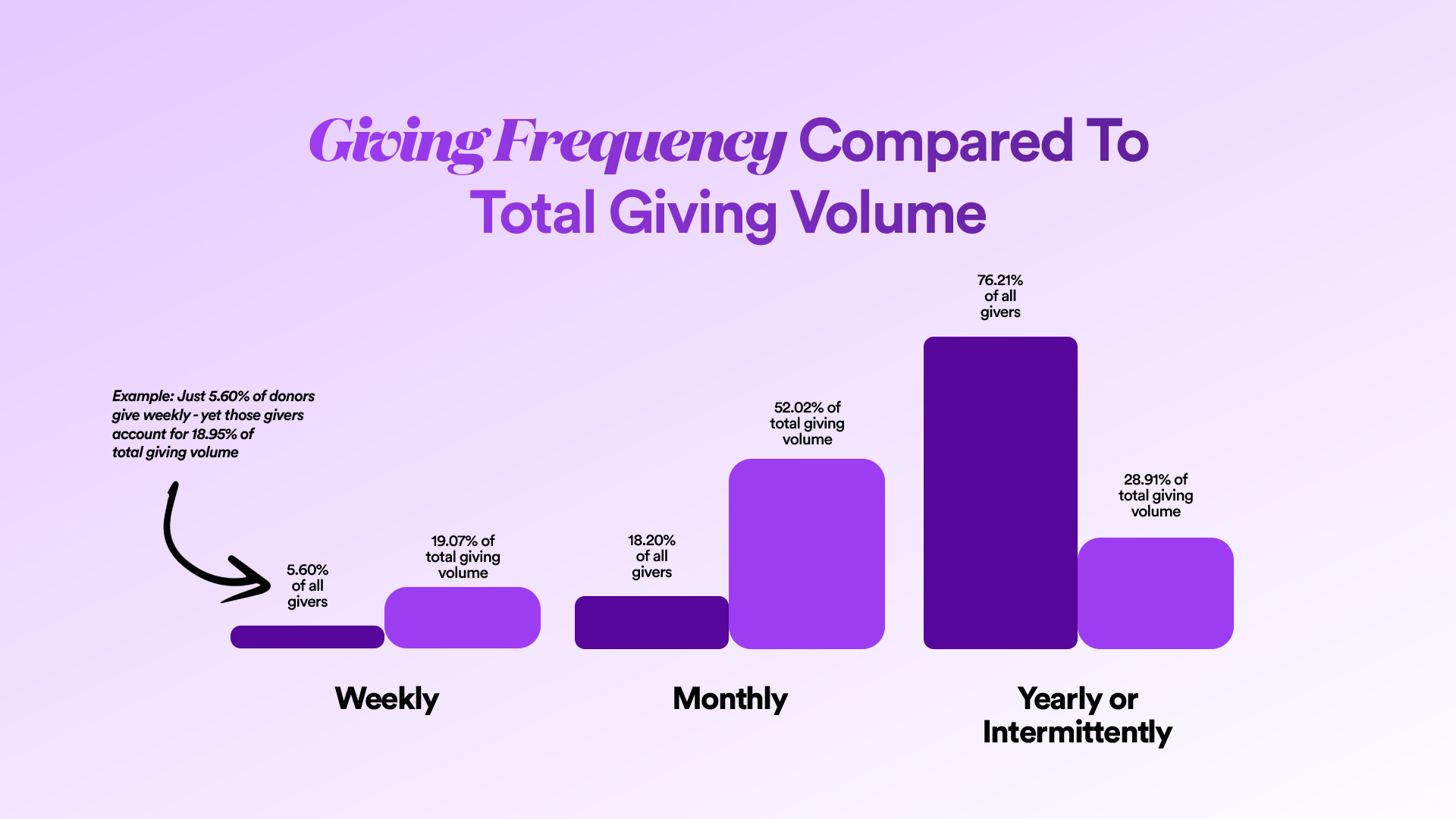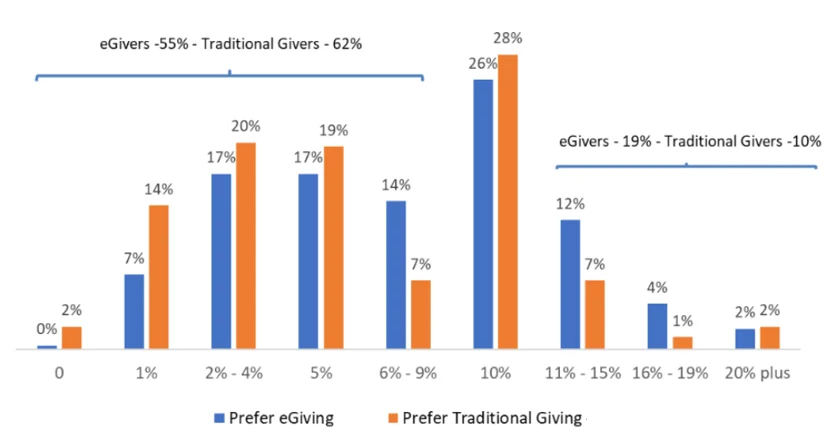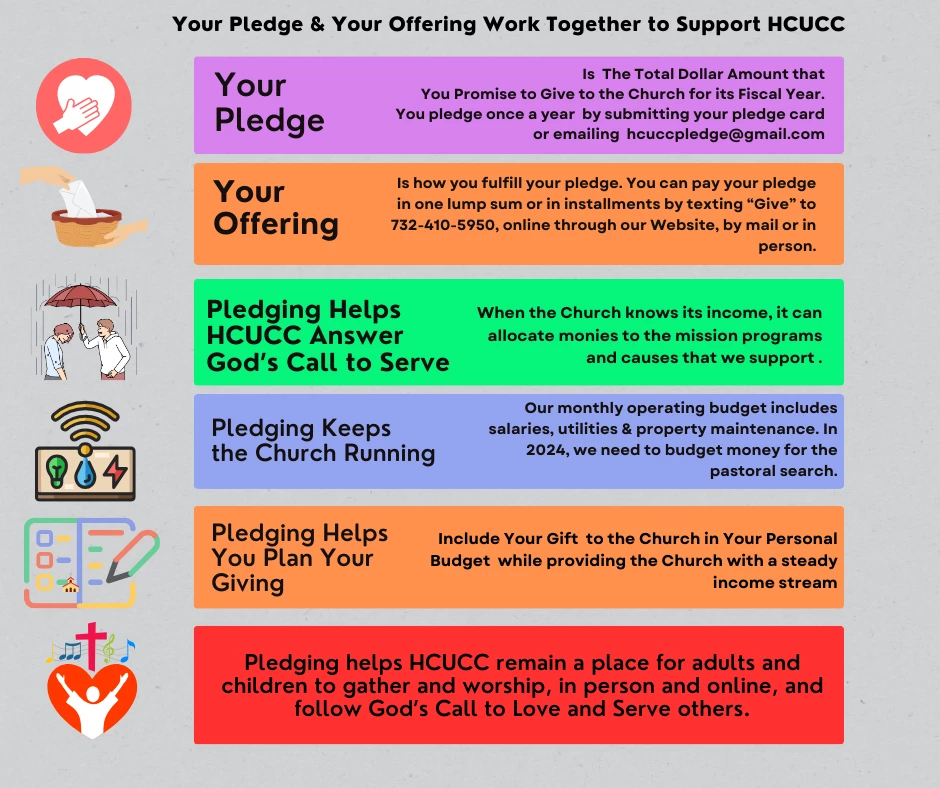From Seasonal Appeals to Stable Growth: A Church Leaders Guide to Sustainable Giving
.jpg)
In Part One of this series, we explored creative, practical ways churches can inspire generosity and re-energize their fundraising efforts — from modern giving tools to community-driven campaigns. But creativity alone isn’t enough to sustain ministry year-round. Many churches still face a recurring challenge: financial instability tied to seasonal giving. In this second installment, we move from short-term tactics to long-term strategy — shifting the focus from “how to raise money” to “how to sustain ministry.” This guide offers a roadmap for building financial resilience through mission-driven stewardship, consistent generosity, and strategic planning that empowers lasting impact.
Introduction: Breaking the Cycle of Seasonal Giving
For many church leaders, the financial calendar feels like a rollercoaster. It’s a cycle of lean summer months followed by a desperate push for year-end giving, punctuated by special appeals for urgent needs. This feast-or-famine reality, driven by seasonal fundraising and one-time campaigns, creates a constant state of low-grade anxiety. It hampers long-term vision, makes strategic planning nearly impossible, and often forces ministry decisions to be based on immediate financial constraints rather than missional opportunities. This reactive approach to church finances not only strains resources but also inadvertently teaches a congregation that giving is transactional—an occasional response to a need rather than a consistent act of worship and partnership in the Gospel. Breaking free from this cycle is not just about improving the bottom line; it's about building a foundation for a thriving, impactful, and resilient ministry.
The Inherent Instability of Seasonal Appeals
Relying on seasonal appeals and end-of-year campaigns for a significant portion of the annual budget is a high-risk strategy. These campaigns are often subject to external factors beyond a church's control, such as economic uncertainty, congregational attendance fluctuations, or even a particularly busy holiday season. When a major appeal underperforms, the consequences can be severe, leading to cuts in ministry programs, delayed staff hiring, or postponement of critical facility maintenance. This model creates a perpetual sense of uncertainty, making it difficult to confidently fund ongoing operational expenses like staff salaries and utilities, let alone invest in new outreach or missions. The constant pressure of "making budget" through these high-stakes campaigns can exhaust leadership and volunteers, shifting the focus from spiritual formation to financial survival.
The Vision for Stable, Sustainable Financial Growth
The alternative is a proactive vision for stable, sustainable financial growth. This model is built not on sporadic generosity but on a consistent, predictable stream of donations rooted in a deeply ingrained culture of stewardship. Imagine a financial reality where the budget is met and exceeded through regular, recurring offerings, allowing leadership to plan months and even years in advance. In this environment, new ministry initiatives can be launched with confidence, missions partners can be supported without interruption, and unexpected opportunities can be seized without creating a financial crisis. This stability empowers churches to move from a defensive posture of maintaining the status quo to an offensive posture of advancing the kingdom, secure in the knowledge that the necessary resources are consistently available.
What This Guide Will Cover: A Proactive Approach
This guide provides church leaders with a comprehensive roadmap to transition from the instability of seasonal appeals to the security of sustainable growth. We will move beyond short-term fundraising tactics to explore a holistic financial strategy grounded in mission and discipleship. We will cover laying a strong foundation by connecting finances to vision, cultivating a church-wide culture of consistent generosity, and implementing strategic financial planning that looks beyond the annual budget and financial statements. Furthermore, we will delve into practical methods for diversifying revenue streams—from optimizing digital giving with fundraising tools like Donately, to exploring creative uses of church assets—and conclude with proven strategies for nurturing donor relationships to build a lasting community of supporters. This is a guide to building a financial future that empowers, rather than limits, your ministry.
Laying the Foundation: Mission-Driven Financial Stewardship
Before any fundraising strategy or budgeting process can be effective, it must be anchored to the fundamental purpose of the church. Sustainable giving is not primarily a financial outcome; it is a spiritual one, flowing from a congregation that is deeply connected to the "why" behind their generosity. When church financial statements are explicitly and consistently linked to the mission, vision, and core values of the ministry, giving transforms from an obligation into a joyful act of participation. This foundational step involves moving the conversation about money from the backroom of the finance committee to the forefront of ministry life, framing every donation as an investment in kingdom impact.

Grounding Finances in Vision and Ministry
A church’s financial plan should be a direct reflection of its ministry priorities and not just the financial situation. Too often, budgets are seen as restrictive documents focused on covering expenses. A mission-driven approach reframes the budget as a moral document—a theological statement that allocates resources to what the church truly values. This requires leaders to first have absolute clarity on their vision. Is the church called to be a hub for community outreach? A center for deep theological training? A launching pad for global missions? The financial strategy must be meticulously crafted to fuel that specific vision. Every line item, from staff salaries to program funds, should be justifiable not just as an expense, but as a strategic investment in achieving the church's unique calling.
Defining Your Church's Core Ministry and Missions
Clarity precedes generosity. A congregation is more likely to give consistently and sacrificially when they have a clear, compelling, and concise understanding of the church's core ministries and missions. This goes beyond a generic mission statement on a website. It involves regularly and vividly communicating the specific areas of impact. Leaders should be able to articulate: "These are the three things we are uniquely called to do in our community, and this is the global mission we are committed to supporting." By defining these pillars—whether it's youth discipleship, local poverty alleviation, or international church planting—you create clear "buckets" of impact that donors can understand and rally behind, turning abstract financial needs into tangible ministry objectives.
Connecting Giving to Impact: Articulating the "Why"
People give to a vision, not to a budget. The most critical task for church leaders is to consistently and creatively articulate the "why" behind every offering. This means translating financial data into stories of life change. Instead of saying, "We need to raise $5,000 for the youth ministry budget," say, "Your gift of $50 sends a student to our summer retreat, an experience where many have made first-time decisions for Christ." Use testimonies, videos, and ministry updates during services to show, not just tell, the congregation how their donations are directly fueling the mission. When people see the tangible fruit of their generosity—the family that was fed, the missionary that was supported, the community that was served—their motivation to give shifts from duty to delight.
Biblical Principles of Generosity and Stewardship
Ultimately, sustainable giving in a church context must be rooted in biblical teaching. A comprehensive approach involves educating the congregation on the theological foundations of stewardship and generosity. This is not about legalistic rules but about heart transformation. Teach on principles like the tithe as a starting point of worshipful giving, the concept of cheerful generosity as modeled in 2 Corinthians 9, and the idea of stewardship as managing all of God’s resources (time, talent, and treasure) for His glory. By framing finances within God's larger story of redemption and provision, you elevate the conversation from simply meeting a budget to participating in a divine partnership. This spiritual grounding is the bedrock upon which a true and lasting culture of generosity is built.
Cultivating a Culture of Consistent Generosity
Sustainable financial health is less about perfecting a single fundraising campaign and more about cultivating an environment where generosity becomes a natural and consistent part of the discipleship journey. A culture of generosity is an ecosystem where giving is understood as a privilege, stewardship is taught as a spiritual discipline, and financial partnership with the church's mission is the norm, not the exception. This cultural shift requires intentional, long-term effort from leadership and a commitment to moving the congregation's perspective on finances from a private matter to a community value. It’s about shaping the heart of the church to reflect the open-handed nature of God. According to the 2025 report from Nucleus, although 76% of church donors give only annually or intermittently, just over 20% who give on a weekly or monthly basis account for roughly 70% of total donation volume.

Moving Beyond Transactional Giving: Fostering a Lifestyle of Open-Handedness
Transactional giving occurs when a donation is made in direct response to a specific, often urgent, appeal. While necessary at times, a ministry cannot thrive on this model alone. The goal is to foster transformational giving, where members see their regular offerings as an ongoing investment in the church's vision and a vital part of their personal worship. This involves reframing the act of giving. It is not "paying the bills" for the church; it is an act of faith, an expression of gratitude, and a declaration of trust in God's provision. Fostering this lifestyle means celebrating consistent faithfulness over the size of one-time gifts and teaching that every act of generosity, regardless of amount, contributes to the collective mission.
The Role of Leadership in Modeling Generosity
A culture of generosity starts at the top. The pastor, elders, board members, and staff must lead the way in demonstrating sacrificial and consistent giving. While specific giving amounts should remain confidential, leaders can and should speak openly about their personal commitment to tithing and generosity. They can share testimonies about how God has proven faithful in their own financial journeys. When the congregation sees that those who are casting the vision are also personally and sacrificially invested in it, their trust and willingness to participate increase dramatically. This visible commitment from leadership provides the moral authority necessary to call the entire church community to a higher level of stewardship.
Educating the Congregation on God's Design for Financial Stewardship
Many Christians have never received clear, grace-filled teaching on what the Bible says about money. To build a culture of generosity, churches must be committed to ongoing financial discipleship. This can take many forms: sermon series on stewardship, small group studies on financial management, or practical workshops on budgeting and debt reduction. The aim is to equip the congregation with a biblical worldview of finances, helping them see their income not as their own, but as a resource entrusted to them by God to be managed wisely for His purposes. As Vanco Payments notes, only about 27% of churchgoers tithe at or above the traditional 10 percent mark, indicating a significant opportunity for discipleship in this area. Effective education dispels fear and legalism around money and replaces it with a liberating vision of financial freedom and kingdom impact.

Encouraging First-Time Givers and Growing Commitment
Every long-term, committed donor was once a first-time giver. A healthy culture of generosity has a clear and intentional process for welcoming and encouraging new donors. This begins with making the act of online giving simple and accessible, especially through digital platforms. Once a first gift is made, a system should be in place for prompt and personal acknowledgment—a thank you email from the pastor, a handwritten note, or a welcome packet. The next step is to create a clear pathway for them to grow in their giving commitment. This could involve targeted communication inviting them to consider setting up a recurring donation, sharing stories of impact that their first gift contributed to, and gently challenging them to take the next step in their stewardship journey.
Strategic Financial Planning: Beyond the Annual Budget
While an annual budget is an essential tool for any church, it is often a reactive document—a plan to spend the money you hope to receive. True financial sustainability requires a shift to strategic financial planning, a forward-looking process that aligns financial resources with long-term ministry vision. This proactive approach involves looking beyond the next twelve months to anticipate future needs, opportunities, and challenges. It's about creating a comprehensive financial plan that not only funds current operations but also builds capacity for future growth, ensuring the ministry's financial management is positioned for health and impact for years to come.
Multi-Year Financial Forecasting and Visioning
Strategic financial planning begins with casting a vision for where the church is headed over the next three, five, or even ten years. What major ministry initiatives do you want to launch? Are there facility expansions or renovations on the horizon? Do you anticipate adding key staff positions? Once this long-term vision is established, leaders can begin to create multi-year financial forecasts. This involves projecting future income based on historical trends and planned generosity initiatives, as well as forecasting major expenses associated with the long-term vision. This process transforms financial planning from a simple accounting exercise into a strategic tool for turning vision into reality.
Developing a Comprehensive Financial Strategy
A comprehensive financial strategy integrates all aspects of the church's financial life into a single, cohesive plan. It goes beyond the income and expense columns of a budget. This strategy should outline the church's philosophy on debt, its goals for building cash reserves, and its policies for managing designated funds. It should also detail the specific tactics that will be used to fund the vision, including plans for cultivating generosity, strategies for increasing recurring donations, and goals for diversifying revenue streams. This document serves as the central playbook for all financial decisions, ensuring that every choice is aligned with the long-term health and mission of the church.
Proactive Church Budgeting for Sustainable Growth
Proactive budgeting is fundamentally different from reactive budgeting. Instead of starting with last year's numbers and making incremental adjustments, proactive budgeting starts with the mission. It is a "vision-based" or "zero-based" approach where every line item must be justified based on its direct contribution to the church's core ministry objectives. This process forces leaders to ask critical questions: "Is this expense still the most effective way to achieve this ministry goal?" or "If we were starting from scratch, is this where we would invest our resources?" This discipline ensures that the budget remains lean, efficient, and laser-focused on funding what matters most, creating a financial framework built for sustainable growth.
Prioritizing Resource Allocation for Ministry Impact
With a proactive budget in place, the next step is to prioritize resource allocation for maximum ministry impact. This often involves making difficult but necessary decisions. It may mean reducing funding for a legacy program that is no longer effective in order to invest in a new outreach initiative with greater potential. It requires a commitment to measuring results and being willing to shift resources to areas that are bearing the most fruit. This strategic allocation ensures that every dollar given to the church is stewarded effectively, maximizing its potential to contribute to life change and kingdom advancement. Transparent communication about these priorities helps the congregation understand the "why" behind financial decisions.
Building Financial Resilience: Establishing Reserve Funds and Contingency Plans
A critical component of any strategic financial plan is building resilience. The unexpected will happen—a major facility repair, a sudden economic downturn, or a global pandemic. Churches that lack financial reserves are incredibly vulnerable to these shocks. A key goal of sustainable financial management is to establish and systematically build an operating reserve fund. A common best practice is to hold three to six months of operating expenses in reserve. This financial cushion provides stability during lean times, allows the church to navigate crises without cutting essential ministry, and provides the flexibility to seize unforeseen ministry opportunities. Developing a formal contingency plan that outlines how the church will respond to various financial scenarios is an essential act of responsible stewardship.
Diversifying Revenue Streams for Enduring Support
While cultivating congregational generosity is the primary engine for funding ministry, relying solely on Sunday offerings creates a single point of failure. To build a truly resilient and sustainable financial future, churches should strategically explore ways to diversify their revenue streams. This involves creatively leveraging existing assets, exploring new funding opportunities, and optimizing current fundraising methods to create multiple, independent sources of income. A diversified approach reduces financial pressure on the congregation, provides stability during fluctuations in giving, and can unlock significant new resources to expand ministry impact.

Optimizing Digital Giving: The Power of Online Platforms and Recurring Donations
In today's digital world, making it easy to give is paramount. A seamless, user-friendly online giving platform is no longer an option but a necessity. According to a 2024 Pushpay study, 94% of churches now leverage digital giving, a clear indicator of its importance. Beyond simply offering an online option, the key is to actively promote recurring donations. As research consistently shows, churches that encourage recurring donations see donors give 42% more annually than one-time givers. In fact, Ministry Brands' 2024 report reveals that recurring donations now account for 43% of all transactions. By branding a recurring giving program (e.g., "Vision Partners," "Kingdom Builders") and making it the primary call to action, churches can build a predictable and growing base of financial support.
Implementing Effective Planned Giving Programs (Bequests, Wills, Endowments)
Planned giving provides a way for congregation members to leave a lasting legacy and make a transformative impact on the church's future. An effective planned giving program educates members on the various ways they can include the church in their wills, trusts, and estate plans. This can include bequests of cash or property, beneficiary designations on retirement accounts, or the creation of endowments. Establishing an endowment fund, where the principal is invested and only the earnings are used for ministry, can provide a perpetual source of income for generations to come. While these gifts are realized in the future, a proactive program that provides information and partners with financial professionals can secure significant long-term resources for the church's mission.
Exploring Mission-Aligned Enterprises and Social Ventures
For some churches, a powerful way to generate revenue and live out their mission is through social enterprise. This involves launching a business venture whose purpose is twofold: to generate a profit that supports the church's ministry and to accomplish a social or spiritual good in the community. Examples could include a coffee shop that provides job training for at-risk youth, a co-working space that fosters community for local entrepreneurs, or a counseling center that offers services on a sliding scale. These enterprises must be carefully planned and professionally managed, but when successful, they can create a sustainable income stream that is directly aligned with the church's calling to serve its community.
Creative Utilization of Church Facilities (Renting Out Space, Community Projects)
Many churches possess a significant and often underutilized asset: their building. During the week, sanctuaries, classrooms, and fellowship halls may sit empty. Creatively leveraging these facilities can generate substantial revenue. This could involve renting space to non-profit organizations, schools, or community groups. A church with a commercial-grade kitchen could lease it to a local caterer or food-based startup. A church with ample parking in a busy area could rent out spaces during weekdays. The key is to develop clear policies, fee structures, and agreements that protect the church while serving the community and creating a valuable income source that supplements congregational giving.
Pursuing Grants and External Funding Opportunities
While congregational giving should remain the core of a church’s funding, external grants can provide significant capital for specific projects and new initiatives. Many community foundations, private foundations, and even corporations offer grant opportunities for non-profit organizations engaged in work that aligns with their priorities, such as poverty relief, education, or community development. Identifying and applying for a grant requires research and skill, but it can be a powerful way to fund a new food pantry, a building renovation for community use, or a new after-school program. Pursuing a grant can provide the seed money for a major project without placing the entire financial burden on the congregation's offerings.
Enhancing Existing Fundraisers with Strategic Vision
Many churches have traditional fundraisers like bake sales, car washes, or annual dinners. While these can be valuable for community building, their financial impact can often be enhanced with a more strategic approach. Instead of simply raising money for the general budget, tie the fundraiser to a specific, compelling project. Frame the event not just as a fundraiser but as an opportunity for outreach and community engagement. Implement modern fundraising tools, such as online ticket sales, mobile bidding for auctions, and peer-to-peer fundraising campaigns, to expand the event's reach beyond the existing congregation. By infusing these traditional events with a clear vision and strategic execution, their effectiveness as a diversified revenue source can be greatly multiplied.
Nurturing Donor Relationships: Building a Community of Supporters
The final, and perhaps most crucial, element of a sustainable giving strategy is the intentional nurturing of donor relationships. In a healthy church, donors are not viewed as ATMs but as vital partners in the ministry. Building a strong community of supporters involves moving beyond anonymous transactions in the offering plate to fostering genuine connection, expressing heartfelt gratitude, and maintaining a high level of transparency. When people feel seen, valued, and informed, their engagement deepens, their commitment grows, and their financial support becomes a joyful and sustained expression of their partnership in the Gospel. This relational approach is the glue that holds the entire financial strategy together.
Here is an example of how one parish, the Holmdel Community United Church of Christ, gives their community numerous ways to give and multiple reminders in an engaging way:

Consistent and Transparent Communication of Financial Health
Trust is the currency of generosity. The single most effective way to build and maintain trust with donors is through consistent and transparent communication about the church's financial health. This means providing regular, easy-to-understand financial updates to the congregation. This could be a quarterly report in the church bulletin, a brief update during a service, or an annual "state of the church" meeting where the budget and financial position are presented in detail. Transparency involves sharing not only the successes but also the challenges. When the congregation is treated as informed partners, they are far more likely to invest in the mission with confidence, knowing exactly how their funds are being stewarded to advance the kingdom.
Turning Vision into Action
The journey from the unpredictable cycle of seasonal appeals to the stability of sustainable growth is one of the most vital strategic shifts a church leader can make. It is a move away from financial anxiety and toward missional confidence. This transformation is not achieved through a single program or a clever fundraising gimmick, but by a holistic commitment to building a new financial framework grounded in a deep and compelling vision for ministry.
The core pillars of this framework are clear: laying a foundation of mission-driven stewardship where every dollar is tied to impact; cultivating a vibrant, church-wide culture of consistent generosity rooted in discipleship; implementing strategic, long-term financial planning that looks beyond the next fiscal year; diversifying revenue streams to build resilience; and intentionally nurturing donor relationships to foster a true community of ministry partners.
To begin this journey, leaders must take the first steps. Assess your current reality: Where does your church currently rely most heavily on seasonal or reactive fundraising? Clarify your message: Can you powerfully and consistently articulate the "why" behind giving? Empower your people: What is your plan for financial discipleship and education? Modernize your tools: Is your digital giving process seamless and does it actively promote recurring donations?
By embracing this proactive approach, you are not merely fixing a budgeting problem. You are stewarding your church’s resources in a way that unleashes its full potential for ministry. You are building a legacy of financial health that will empower your church to faithfully and fruitfully advance the Gospel in your community and beyond for generations to come.
Where Do Churches Go From Here
By reimagining church finances as a reflection of mission and discipleship rather than necessity, ministries can build steady, Spirit-led momentum that lasts well beyond the holiday giving rush. The next frontier for churches lies in adapting these principles to a rapidly changing landscape — one where online and in-person ministry now coexist in a hybrid world.
In Part Three of this Donately series, we’ll explore what sustainable giving looks like in the Hybrid Era of Church Fundraising — blending technology with personal connection to reach younger generations, engage remote congregants, and create digital-first stewardship models that feel just as meaningful as passing the offering plate on Sunday morning.
Let's Fundraise Together!
Sign up today and see why thousands of organizations trust Donately to manage their online fundraising.
.webp)





